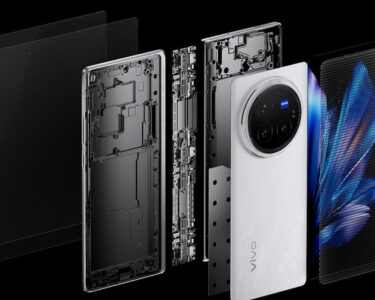As the demand for mobile computing and all-electric cars increases, the limitations of current battery technology present a roadblock. Invented in the 1790s by Italian physicist Alessandro Volta, the electric battery has been the workhorse of numerous gadgets, devices, and machines.
As consumer devices have become smaller and their uninterrupted use before recharging is more important, it has also become increasingly important for batteries to become both miniaturized and more energy efficient. This, however, has proved to be a technological hurdle that, if surpassed, will be an important and profitable development for tomorrow’s high-tech economy.
Battery Technology
All electrical batteries rely on the fundamental chemical reaction of reduction and oxidation (redox) that can occur between two different materials. These reactions are housed in a closed and sealed container. The cathode, or positive terminal is reduced by the anode, or negative terminal, where oxidization occurs. The cathode and anode are separated physically by an electrolyte that allows electrons to easily flow from one terminal to the other. This flow of electrons causes an electrical potential, which allows for an electric current when a circuit is completed.
Disposable consumer batteries (known as primary batteries), such as the AA- and AAA-sized cells produced by companies like Energizer (ENR), rely on a technology that is not conducive to modern applications. For one, they are not rechargeable. These so-called alkaline batteries utilize a manganese dioxide cathode and a zinc anode, separated by a dilute potassium dioxide electrolyte. The electrolyte oxidizes the zinc in the anode while the manganese dioxide in the cathode reacts with the oxidized zinc ions to create electricity. Gradually, reaction byproducts build up in the electrolyte and the amount of zinc left to be oxidized is diminished. Eventually, the battery dies. These batteries typically provide 1.5 volts of electricity and can be arranged in a serial fashion to increase that amount. For example, two AA batteries in a series provide three volts of electricity.
Rechargeable batteries (known as secondary batteries) work in much the same way, utilizing a reduction-oxidation reaction between two materials, but they also allow the reaction to flow in reverse. The most commonly used rechargeable batteries on the market today are lithium-ion (LiOn), although various other technologies were also tried in the search for a workable rechargeable battery, including nickel-metal hydride (NiMH) and nickel-cadmium (NiCd).
NiCd were the first commercially available rechargeable batteries for mass market use but suffered from being capable of only a limited number of recharges. NiMH replaced NiCd batteries and was able to be charged more frequently. Unfortunately, they had a very short shelf life, so if they were not used soon after being produced, they could be ineffective. LiOn batteries solved these problems by coming in a small container, having a long shelf life, and allowing for many charges. But, LiOn batteries are not the most commonly used in consumer electronics like mobile devices and laptop computers. These batteries are a lot more expensive than disposable alkaline batteries and do not typically come in the traditional sizes of AA, AAA, C, D, etc.
The last type of rechargeable batteries that most people are familiar with is liquid lead-acid batteries, most commonly used as car batteries. These batteries can provide a lot of power (as when cold starting a car), but contain hazardous materials, including lead and sulfuric acid, which is used as the electrolyte. These kinds of batteries must be disposed of with care so as not to pollute the environment or cause physical harm to those handling them.
The goal of current battery technology is to create a battery that can match or improve upon the performance of LiOn batteries but without the heavy cost associated with their production. Within the lithium-ion family, efforts have been focused on adding additional ingredients to increase the battery’s effectiveness while lowering the price tag. For example, lithium-cobalt (LiCoO2) arrangements are now found in many cell phones, laptops, digital cameras, and wearable products. Lithium-manganese (LiMn2O4) cells are most commonly used for power tools, medical instruments, and electric powertrains, such as those found in electric vehicles.
Currently, there are teams conducting research and development to augment the performance of lithium-based batteries. Lithium-air (Li-Air) batteries are an exciting new development that could allow for much greater energy storage capacity – up to 10 times more capacity than a typical LiOn battery. These batteries would literally “breathe” air by using free oxygen to oxidize the anode. While this technology seems promising, there are a number of technological problems, including a quick build-up of performance-decreasing byproducts and the problem of “sudden death” in which the battery ceases to work without warning.
Lithium-metal batteries are also an impressive development, promising nearly four times more energy efficiency than the current electric car battery technology. This type of battery also is much less expensive to produce, which will bring down the cost of products that use them. Safety issues, however, are a major concern as these batteries can overheat, cause fire, or explode if damaged. Other new technologies being worked on include lithium-sulfur and silicon carbon, but these cells are still in the early phases of research and are not yet commercially viable. There are also several developments occurring around solar-powered batteries.
Investing in Battery Technology
If and when battery technology takes off in these exciting new directions, it will lower the cost of production for consumer electronics and for electric vehicles such as those produced by Tesla Motors (TSLA). Tesla recently announced the construction of a ‘gigafactory’ to not only produce more vehicles but also produce its own LiOn batteries in-house, in conjunction with Japanese electronics giant Panasonic (ADR: PCRFY). By taking the battery production problem into its own hands, Tesla may have found a great way to gain investment exposure to both electric cars and battery tech.





